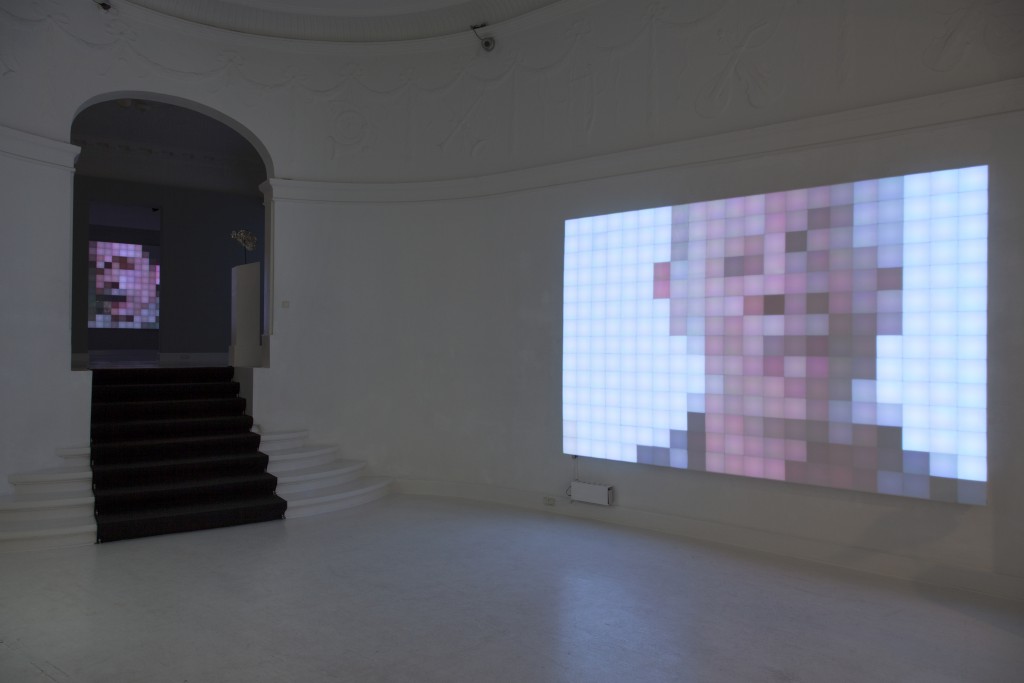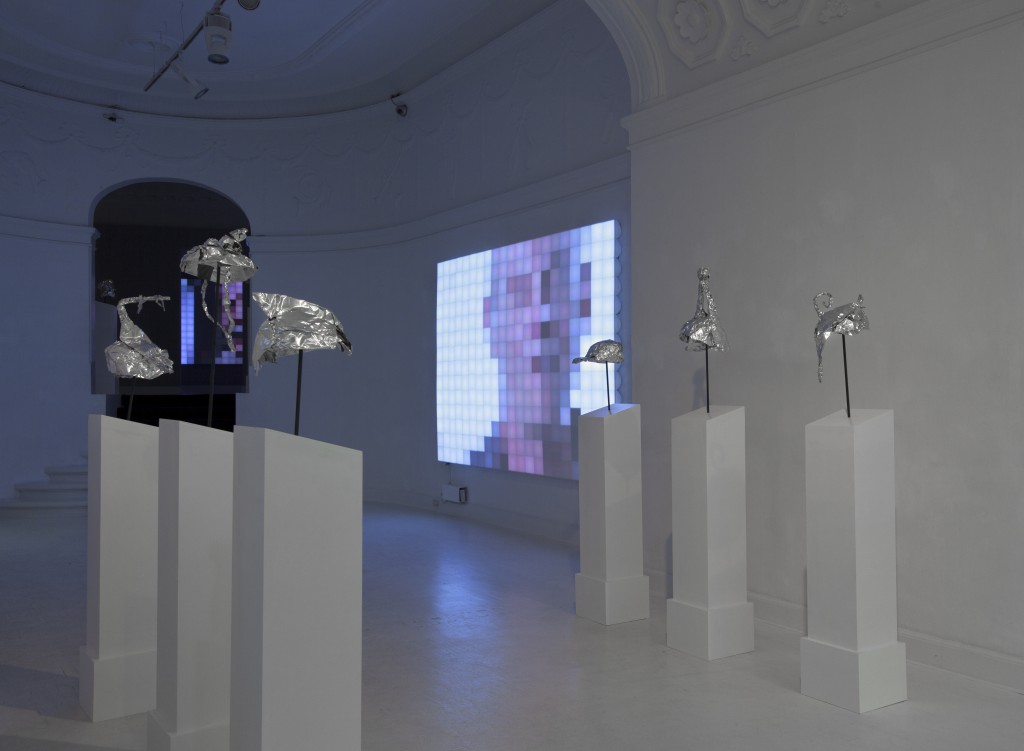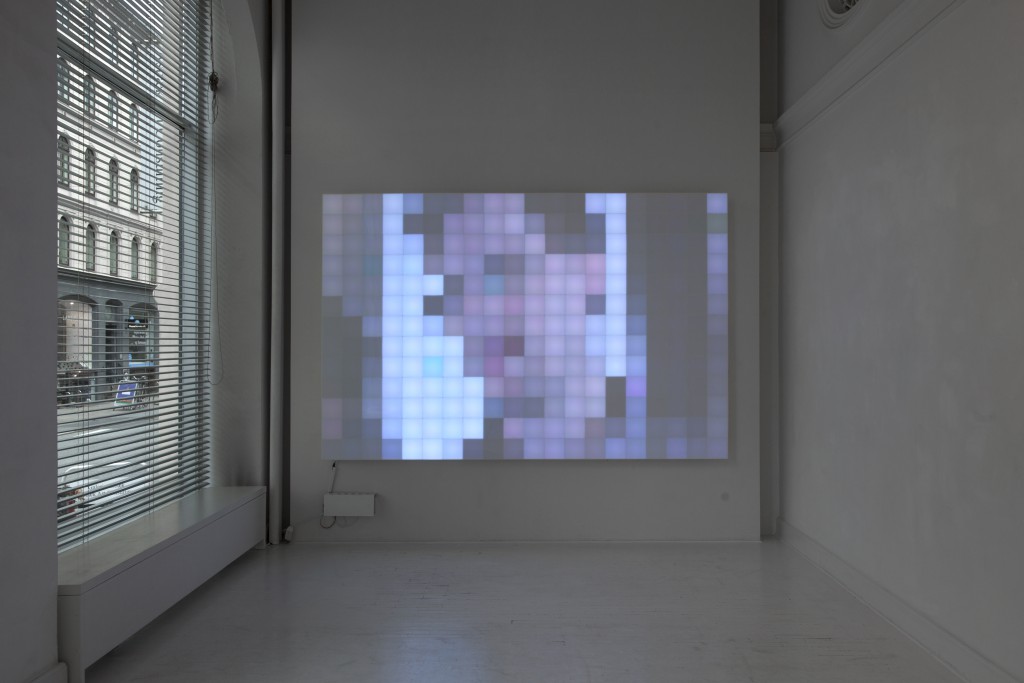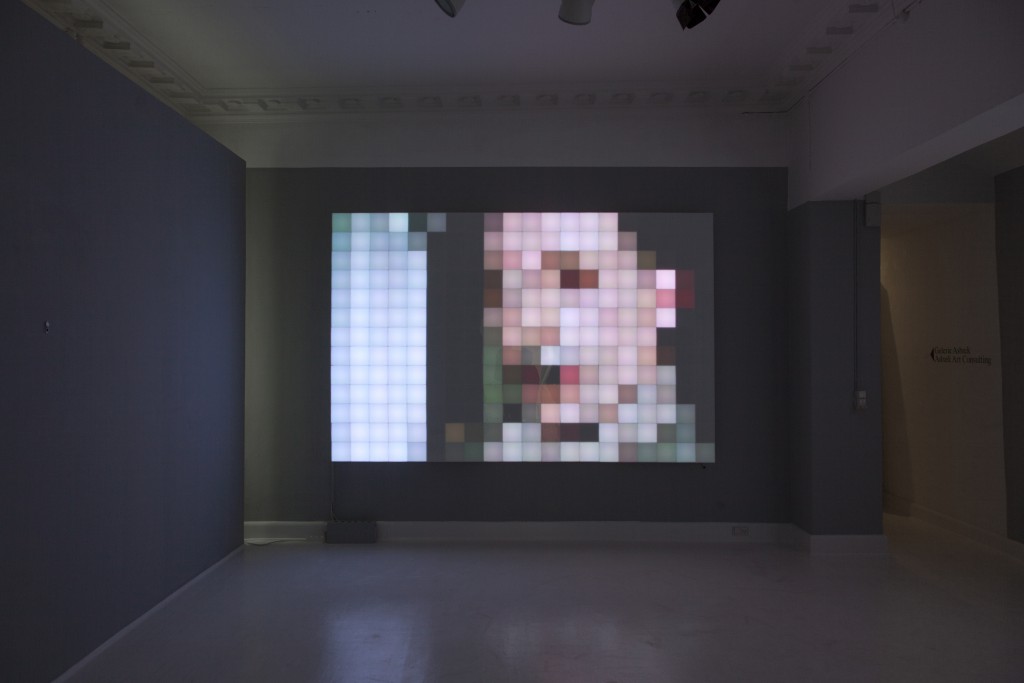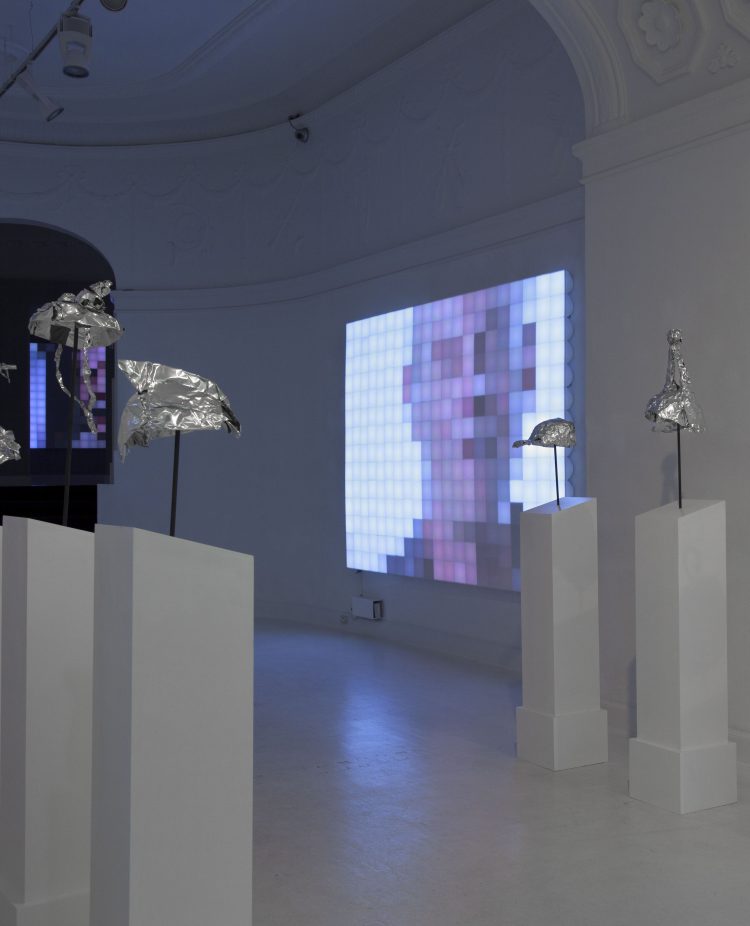
Tin Foil Helmet
What is happening to the right to privacy?
This question – highly relevant today – has been the theme for the Danish artist Niels Bonde in drawing up the exhibition, which works with and comments on the issue in a variety of media: LED screens, models and sculptures. Today’s mediascape is constantly shifting the boundaries between the private and public sphere. TV programmes trumpet forth private matters; surveillance and bugging have become the order of the day, while we ourselves, on Instagram, Twitter and Facebook, enthusiastically let others share our private lives. Niels Bonde has visualized a protest in a series of sculptural tin foil helmets, the last poetic defences of the mentally disturbed. The tin foil helmets are placed on tall stands, like the evil-averting statues of antiquity, the herms, and have been produced with a quotation from Joseph Heller’s novel Catch 22 in mind: “Just because you’re paranoid doesn’t mean they aren’t after you”.
Private space can be manifested in many different ways. In this exhibition private space is modelled up and literally hidden away in the wall. So as a viewer you have to adopt a voyeuristic role and peep in through small holes that have been cut into the wall if you want to experience the small intimate spaces. “Nothing was your own except the few cubic centimetres inside your skull,” wrote the English author George Orwell in his dystopian novel 1984 from 1949, which describes the crushing oppression of a totalitarian regime exerted through surveillance and thought control. As we know, the novel launched the concept “Big Brother is Watching You”. By participating as a viewer in this game, by standing and peeping in, in the same way as when you see Duchamp’s Étant Donnés, you also implicitly participate on the ‘wrong’ side.
The last and most up-to-date reference to the borderland between private and public space in the digital age is shown on the pixellated LED screens whose films refer to whistleblowers as heroes, the American system administrator Edward Snowden, the soldier Bradley Manning and the author George Orwell, who issues a last warning from his death bed – not to permit total control. Even as ordinary users of the digital sphere we become victims of systematic tracking of our movements on the Internet, so that our actions, comments and purchases are stored without our actual acceptance, which is commented on in the work Nem ID (Easy ID), where a logging-in to the artist’s own account is shown – here, too, highly pixellated.
As a device from the artist’s side, all the media used are created in lo-fi (low fidelity), a principle borrowed from the world of music, where a deliberately chosen low quality produces a more authentic effect and greater artistic freedom. At the same time the greatly pixellated screen images have an aesthetic expression with art-historical references to Mondrian’s abstract formal idiom in Broadway Boogie Woogie, the disco floor from Saturday Night Fever, where John Travolta wore out his dancing shoes, as well as the GIF animations of the very earliest Internet.
Reviews:
Paranoia, satire og voyeurisme – Interview med Niels Bonde Kopenhagen
Opening: Kopenhagen
Dansk version
Hvad sker der med retten til et privatliv? Det højaktuelle spørgsmål er temaet for den danske kunstner Niels Bonde i udarbejdelsen af udstillingen, der bearbejder og kommenterer problematikken i forskellige medier; LED skærme, modeller og skulpturer. Dagens mediebillede rykker hele tiden grænsen for den private og offentlige sfære. Tv programmer udstiller private anliggender; overvågning og aflytning er blevet daglig kost, alt imens vi selv via Instagram, Twitter og Facebook begejstret lader andre følge med i vores privatliv. Niels Bonde har visualiseret en protest i en serie skulpturelle sølvpapirs hjelme, de mentalt forstyrredes sidste poetiske forsvar. Sølvpapirshjelmene er placeret på høje podier, som oldtidens ondskabsafværgende statuer hermer, og er produceret med tanke på et citat fra Joseph Hellers roman Catch 22: “Just because you’re paranoid doesn’t mean they aren’t after you”.
Det private rum kan manifestere sig på mange forskellige måder. I denne udstilling er det private rum modelleret op og bogstavelig talt gemt ind i væggen. Som beskuer er man derfor nødt til at påtage sig en voyeristisk rolle og kigge ind gennem små huller, der er skåret ud i væggen, hvis man vil opleve de små intime rum. Nothing was your own except the few cubic centimeters inside your skull, skriver den engelske forfatter George Orwell i den dystopiske roman 1984, fra 1949, som beskriver et totalitært regimes knugende undertrykkelse ved hjælp af overvågning og tankekontrol. Romanen lancerede som bekendt begrebet ”Big Brother is Watching You”.Deltager man som tilskuer i dette spil, ved at stå og kigge ind, på samme måde som når man ser Duchamps Étant Donnés, deltager man altså implicit på den ”forkerte” side.
Den sidste og mest samtidige reference til grænsefeltet mellem det private og offentlige rum i den digitale tidsalder, vises på de pixelerede LED skærme, hvis film refererer til whistleblowers som helte, den amerikanske systemadministrator Edward Snowden, soldaten Bradley Manning samt forfatteren George Orwell der fra sit dødsleje kommer med en sidste advarsel om ikke at tillade den totale kontrol. Selv som almindelig bruger af den digitale sfære bliver vi ofre for en systematisk tracking af vores færden på nettet, så vores handlinger, kommentarer og køb bliver lagret uden vores egentlige accept, hvilket direkte kommenteres i værket Nem ID hvor indlogning på kunstnerens egen konto vises – også her stærkt pixeleret.
Det er et greb fra kunstneren side, at alle benyttede medier er skabt i lo-fi (low fidelity). Et lånt princip fra den musikalske verden, hvor en bevidst valgt lav kvalitet giver en mere autentisk virkning og større kunstnerisk frihed. De stærkt pixelerede skærme har samtidig et æstetisk udtryk med kunsthistoriske referencer til både Mondrians abstrakte formsprog i Broadway Boogie Woogie, discogulvet fra Saturday Night Fever, hvor John Travolta sled sine dansesko, samt det allertidligste internets GIF-animationer.
